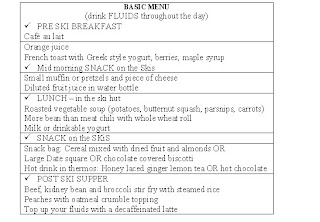Have you ever wondered if food can help you heal? The truth is…YES…it can! Food provides the building blocks needed for cells to repair and proliferate and also influences messages sent throughout the body to regulate blood flow, tissue replacement and healing. The main key is to eat a diet that is rich in whole grains, fruits, vegetables, lean protein and healthy fat as these provide vitamins, minerals and antioxidants. However, when injured there are several nutrients to focus on to help the body heal.
Macronutrients:
- Calories: Energy needs increase when the body is repairing itself due to post-injury hormonal changes and new tissue formation. Resting metabolic rate (RMR) may increase 15-50% after traumatic injury and 15-20% following surgery. Thus the goal is to increase healthy calories post-injury.
- Protein: Protein is key for tissue repair and remodeling. Rehabbing an injury requires 2 grams per kg body weight of protein.
- Fat: Increase omega-3 fatty acids to 3-9 grams per day. Examples include salmon, salmon oil, sardine oil, flaxseed, walnuts, hemp seeds, green leafy vegetables, other oily fish, nuts, seeds, olive oil. Limit intake of omega-6 fatty acids from foods such as vegetable oils (corn, safflower, sunflower and soybean).
- Vitamin E has been shown to delay healing in muscular injuries and thus should not be provided during injury recovery.
- Vitamin C enhances neutrophil and lymphocyte activity during the inflammation phase and plays a role in collagen synthesis.
- Recommend up to 1-2 grams per day for limited time spans
- Food examples include: citrus fruits, strawberries, red and green peppers, green leafy vegetables
- Vitamin A reduces early inflammation after injury, helps reverse post-injury immune system suppression and assists in collagen formation.
- Recommend 25,000 IU during short periods after surgery and 10,000 IU for 1-2 weeks post-injury
- Food examples include: green leafy vegetables, carrots, sweet potatoes, butternut squash, mango
- Flavonoids can also help manage inflammation through their well-known antioxidant properties.
- Compounds found in cocoa, tea, fruits, vegetables, legumes
- Can be taken in supplement form via blueberry extracts, green tea extracts, and bioflavonoid supplements; however, the best source is from food
- Copper is a mineral that assists in the formation of red blood cells and acts in concert with vitamin C to strengthen connective tissue.
- Recommend 2-4 mg per day during first few weeks post-injury
- Food examples include: seeds, beans
- Zinc is required for over 300 enzymes in the body and plays a role in DNA synthesis, cell division, and protein synthesis; all of these enzymes are necessary for tissue regeneration and repair.
- Recommend 15-20 mg per day, especially during initial stages post-injury
- Food examples include: animal meats, oysters, clams, nuts, seeds
- Iron deficiency impairs proliferation of all cells involved in wound debridement and healing.
- Iron levels should be checked for iron deficiency prior to recommending iron supplements or an increased consumption of iron-rich foods
- Food examples include: nuts, seeds, tofu, meat, sweet potato, pinto beans, artichoke, spinach, tomato juice
- Consume iron-rich foods with foods rich in vitamin C such as citrus fruits/juices, tomatoes, green leafy vegetables, red and green peppers, this helps increase iron absorption






